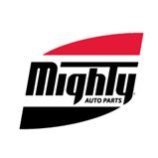-
Welcome to Auto Parts Forum
Whether you are a veteran automotive parts guru or just someone looking for some quick auto parts advice, register today and start a new topic in our forum. Registration is free and you can even sign up with social network platforms such as Facebook, X, and LinkedIn.
ELECTRICAL CONNECTIONS OR LOW VOLTAGE: Both Can Create Intermittent Electrical Challenges
-
Similar Topics
-
By Mighty Auto Parts
The post
link hidden, please login to view appeared first on link hidden, please login to view. The C6 Corvette was just removed from winter storage and was about to receive a complete service. The engine roared to life and the instrument panel reflected a systems check. Bulbs were illuminated and would time out, indicating that systems or components were functioning as normal. Moments later, a warning lamp resembling an occupant holding […]
The post
link hidden, please login to view appeared first on link hidden, please login to view.
link hidden, please login to view -
By Counterman
Motorcar Parts of America (MPA) announced the company has expanded its product coverage programs for starters and alternators, brake calipers, brake pads and brake rotors, with more than 120 new part numbers covering an additional 30 million vehicles in operation.
The new part numbers are offered through QB, Quality-Built, Quality-Built Black Series and Pure Energy brands powered by MPA, which serve the professional installer market. A select list of late model part number introductions is available via the link below. A complete list is available by contacting a
link hidden, please login to view sales representative. “Our Quality-Built and Pure Energy products continue to gain traction in the professional market and the new part number introductions highlight our ongoing commitment to proactively develop, catalog, and distribute products to meet the demand,” said Jamie Cook, senior vice president of sales and marketing for Motorcar Parts of America.
link hidden, please login to view The post
link hidden, please login to view appeared first on link hidden, please login to view.
link hidden, please login to view -
-




Recommended Posts
Join the conversation
You can post now and register later. If you have an account, sign in now to post with your account.
Note: Your post will require moderator approval before it will be visible.